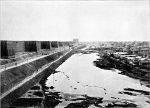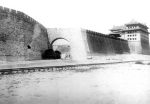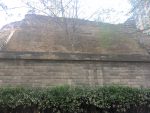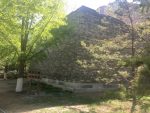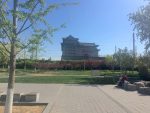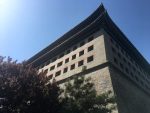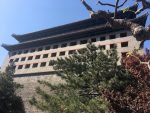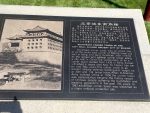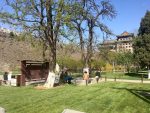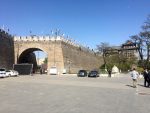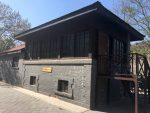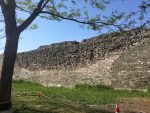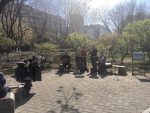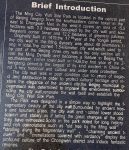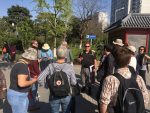Walking along the old city wall
As mentioned in a previous post after the Observatory talk, we had lunch and then journey south to the Ming City Wall Ruins Park and walk along the base of the walls with in-depth commentary and historical anecdotes provided by Jim Nobles. The tour of the corner tower was not possible that day due to another event. We started at the east section near the railways station where you can see the inner structure of the massive wall. We then went south turning around the corner tower.
Starting 10:30 AM the tour concluded at Chongwenmen subway station around 5:00 PM. It was another great event by The Royal Asiatic Society of Beijing.
The Beijing Ming City Wall Ruins Park is a park in Beijing with the longest and best preserved section of the Ming Dynasty city wall. The park is located 3 km from the city center and extends east from Chongwenmen to Dongbianmen and then north to near to Beijing Railway Station East Street. The park features a 1.5 km section of the Ming city wall and the Southeast Corner Tower, which are over 550 years old and surrounded by a lovely green park space to the south and east, where people gather to relax and play music.
 Map of Beijing’s Ming City walls (Wikipedia)
Map of Beijing’s Ming City walls (Wikipedia)
- old city wall
- corner tower and railway gate
The city wall from Chongwenmen to the Southeast Corner Tower in the early 1900s overlooking the moat and the Huashi neighborhood. The Corner Tower in 1921, after a gate was opened in the wall for railway tracks when the Beijing–Fengtian Railway was built over the moat outside the wall.
History of the wall
Preserved is a section of the Ming city wall and the Southeast Corner Tower, that once connected Chongwenmen and Dongbianmen, two city gates that have been replaced with roadway intersections. A shorter section of the eastern city wall is separated from the corner tower by a railway out of the Beijing railway station. The Beijing railway station and its rail depots occupy the area immediately north of the park.
The inner city wall was built during the Ming Dynasty in 1419. The Ming city walls stood for nearly 550 years until the early 1960s when most of the gates and walls were torn down to build the Beijing Subway, which runs underneath where the walls stood. The subway’s inner loop line turned into the Inner City at Chongwenmen to stop at the Beijing railway station, and did not need to run beneath a section of the wall at the southeast corner of the Inner City. Of the 40 km of the original wall, only this 1.5 km section was spared.
In the late 1990s, the city government decided convert the remnants of the wall into a park and relocate the small businesses and homes between the foot of the southern city wall and Chongwenmen East Avenue. Construction began in November 2001. Large trees that stood in the courtyards were preserved. To preserve the historical integrity of the fortifications, the authorities solicited donations of Ming era bricks from city residents to use in the restoration. About of one-fifth of 2,000,000 bricks used in the restoration are from the Ming-era.
The Southeast Corner Tower was built from 1436 to 1439 and is a major state-protected historical site. The tower, which rises 29 m in height with 144 archery windows, is the largest corner tower still standing in China. The tower could house 200 soldiers and has ramps for soldiers and horses. Inside the tower is an exhibit on the history of the city’s Ming-era walls. The Red Gate Gallery, a privately managed, non-profit contemporary art gallery opened in 1991 inside the tower and operated for over two decades before moving to the 798 Art Zone.
The inner city wall stood 11.4 m high and were topped with battlements that rose a further 1.9 m. The wall, lined with brick and filled with rammed earth, was 19.8 m thick at the foundation and 16 m at the top. Bastions protruding on the outside face of the wall are locally known as mamian or “horse face”. The bastions were spaced about 80 m apart, allowed archers to fire at attackers from three sides. The restored fortification has 11 bastions on the southern wall and two bastions on the shorter eastern wall. Only the battlements of the corner tower and one bastion has been fully restored.
During its history the city wall was never breached and artillery could not bring it down due to its massive construction. The city was penetrated at the gates.
Also on the park grounds is a restored signal house of the Beijing–Fengtian (Jingfeng) Railway built in 1901.
